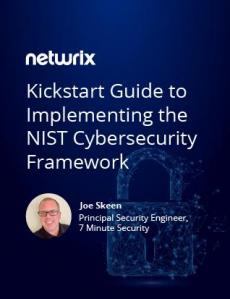Security | Threat Detection | Cyberattacks | DevSecOps | Compliance
June 2021
Is NIST Mandatory?
You don’t have to spend a long time in the cybersecurity and information technology world before someone brings up NIST compliance. Since the agency’s inception in 1901 — yes, it’s that old — the National Institute of Standards and Technology has been trusted as the guardian of all proper measurements and standards, including cybersecurity standards meant to increase data security. NIST, which these days is part of the U.S.
How to Apply the Risk Management Framework (RMF)
The Risk Management Framework (RMF) is most commonly associated with the NIST SP 800-37 guide for “Applying the Risk Management Framework to Federal Information Systems: A Security Life Cycle Approach,” which has been available for FISMA compliance since 2004. It was updated in December 2018 to revision 2. This was the result of a Joint Task Force Transformation Initiative Interagency Working Group; it’s something that every agency of the U.S.




